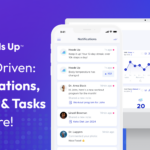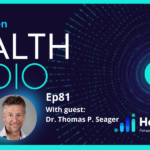Conventional vs. Functional Lab Testing Ranges And Markers
The Neutrophil-lymphocyte ratio is a blood marker calculation used in functional medicine, particularly in the fields of immunology and cancer. Looking at conventional lab testing can be a great screening tool for diseases and disorders, but looking at them through a functional lens can provide insight into the health trend of a patient long before a disease is discovered.
Functional ranges and ratios can help a clinician to see the health trend of a patient long before a diagnosis is made, thereby improving the overall health, wellness, and longevity potential of a patient, lowering medical costs, and improving the quality of life.
What Is NLR?
The neutrophil-lymphocyte ratio (NLR) is a calculation that can be run off of a Complete Blood Count (CBC), which is a very low-cost, low barrier test picked up by most insurance companies or available through any direct to consumer lab testing. This marker “may be an indicator of systemic inflammation, as neutrophils and lymphocytes are thought to be significant in tumour immunology and inflammation.”
What Do Neutrophils And Lymphocytes Do?
Neutrophils are a white blood cell (WBC) and are part of the innate immune system, which is the branch of our immune system that we are born with and identifies potential threats as either self or not-self. They make up about 60-70% of WBCs, are made in the bone marrow, and are found mostly in the lymphatic system including the lymph nodes, spleen, and thymus.
Lymphocytes are another type of white blood cell, and are part of the adaptive or acquired immune system, making up about 20-25% of the WBCs and are more specific in their targets. They are what we acquire after exposure to a virus or pathogen and is the system that vaccines are based upon.
Together the neutrophils and lymphocytes work to protect the body from potential pathogens or threats, by increasing inflammation to bring nutrients to the site of injury or using inflammation to keep the infection or pathogen from spreading to other parts of the body easily.
How Can The Neutrophil-Lymphocyte Ratio Benefit Myself Or My Patients?
Looking at the ratio between neutrophils and lymphocytes can help to show if there is an increased likelihood of inflammation and other threats to the system that are working in the background against the body on a chronic or acute level. This ratio is often used with functional doctors who work with cancer patients. One study found that preoperative breast cancer patients with a high NLR had worse outcomes than those with a lower NLR. Another study found that the NLR in conjunction with a CRP (C-Reactive Protein) could be a better predictor of outcome for gastric cancer patients utilizing a ratio known as COC-NLR.
“NLR may help to reflect systemic inflammation in patients with cancer and their immunologic capacity to mount an attack against the malignant cells. An increasing number of recent reports suggest that NLR can be used as a prognostic marker in various malignancies”. The NLR “has been shown to predict cardiac arrhythmias as well as short- and long-term mortality in patients with acute coronary syndromes”.
How Do I Calculate Neutrophil-Lymphocyte Ratio (NLR)?
To calculate the NLR marker, you simply need to divide the neutrophils into the lymphocytes based on your most recent CBC. Rather than manually calculating your patient’s NLRs, Heads Up is now calculating this measurement for you when you import or enter your lab values into our system.
Seeing the trends over time will provide an even deeper insight into the health trend of your patients and can be a warning sign that it’s time to take action with diet or lifestyle interventions or perhaps even consider further testing.
What Do The Numbers Mean?
I use a 2:1 or better ratio for neutrophils to leukocytes for the NLR when working with patients. For example, a ratio of 55-60:25-30 would be the highest/lowest I would want to see a neutrophil to lymphocyte ratio.
I also look at how big of a gap there is between neutrophils and lymphocytes, with a larger gap indicating a higher risk. Additionally, there is cause for concern if there is a relative ratio switch and the lymphocytes are elevated, and neutrophils lowered which could equate to blood dyscrasias, leukemias, lymphomas.
Consult with your health professional of choice if you have questions on these or any other lab values.
How can I track my NLR?
If you are using the Heads Up app to track lab values, you can either use the default ranges or enter your own custom ranges depending on your unique health objectives.
This video will show you how to track lab values and customize ranges in your Heads Up profile.
Customize your lab test reference ranges from Heads Up Health on Vimeo.
Resources
https://www.ncbi.nlm.nih.gov/pmc/articles/PMC4839997/
https://pubmed.ncbi.nlm.nih.gov/30544398/?from_term=NLR&from_page=2&from_pos=1
https://pubmed.ncbi.nlm.nih.gov/29491721/?from_term=NLR+&from_page=2&from_pos=4
https://www.ncbi.nlm.nih.gov/pmc/articles/PMC5458276/
https://pubmed.ncbi.nlm.nih.gov/26878164/?from_term=NLR&from_pos=1
https://ic.steadyhealth.com/low-neutrophils-and-high-lymphocytes











